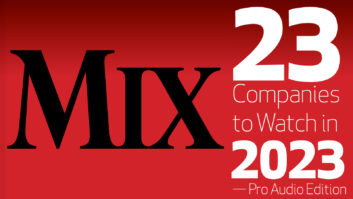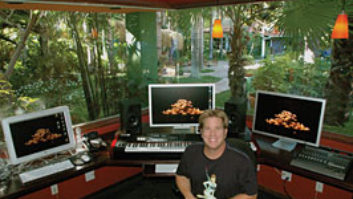Much has been said (and written) about the “desktop studio” — and with good reason. Given the state of modern DAWs, 24-bit sampling libraries, plug-ins and virtual instruments that can conjure anything from a 9-foot Bosendorfer to a road-worn B3 to any synth imaginable, there are few tasks that the desktop (or laptop) studio can’t perform.
The desktop studio environment offers convenience in a compact package, yet among all of the glitter and magic such systems provide, the need for attention to audio details is just as important as in the traditional studio. Although an ever-increasing CPU horsepower supports more and more powerful software with fast, real-time processing, high-resolution 24-bit, 96/192kHz recording applications only spotlight the need for an improved signal chain. In any digital system, whether computer- or hardware-based, the heart of the system is the converters, and it is here that desktop (and laptop) rigs often fall short.
Fortunately, this is one area where upgrades are readily available, either in the form new AD/DA cards or external converter boxes. The same certainly applies to computers and low-end cards with built-in mic preamps, where the performance is mediocre at best. Here again, reasonably priced outboard preamps with solid specs are plentiful from any number of suppliers, and paired with a good mic will make a significant sonic improvement over “stock” offerings.
Certainly, there are applications where the desktop or laptop studio wins out over “traditional” hardware systems, such as editing audio tracks on a laptop during a cross-country flight, or loading virtual instruments and sequences into a rackmount computer for live performances. However, for most users, a hybrid approach may be best, incorporating a computer-based system into a conventional studio, creating the “new studio” with a Mac/PC core accompanied by a hardware controller, some standard outboard gear and perhaps plug-ins handling other processing chores, or as a source of production loops, rhythm beds or virtual instruments.
Of course, desktop production systems are not limited to computer-based systems, as the power of stand-alone hardware units also continues to evolve. For example, at last month’s NAMM show, Roland unveiled its VS8F-3, an expansion board that brings a host of third-party plug-ins (from Antares, IK Multimedia, TC Electronics, Universal Audio, Massenburg, McDSP and SoundToys) to 250,000 users of its VS Series studios.
There’s more to come. Announced last month and shipping now is Apple’s GarageBand, which Steve Jobs described as “a pro music tool for everyone.” The application (Mac, of course) is a 64-track recorder/mixer with 50 virtual instruments, 1,000 loops, 200 effects, amp simulations and direct iTune file export. Options include a $99 M-Audio keyboard and a JamPack expander with more loops, effects and instruments.
Whether desktop, laptop, PC, Mac, software, hardware or hybrid, the virtual studio is an integral part of the modern production environment. Factor in the absolute power of today’s computers and the dirt-cheap storage/RAM prices, and there’s a revolution waiting to happen. Just add the right song.



